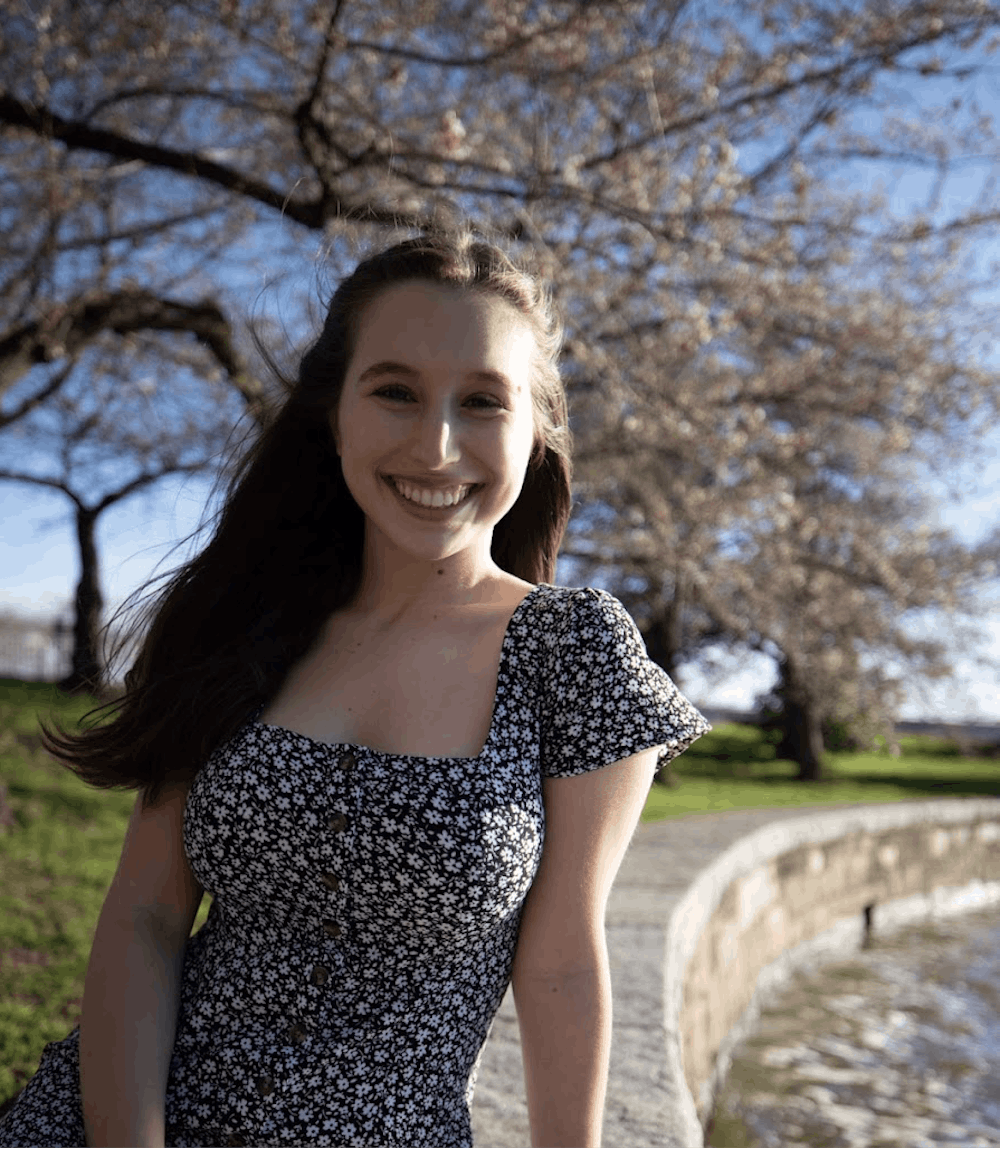From the Newsstands: This story appeared in The Eagle's November 2022 print edition. You can find the digital version here.
At 2:30 a.m., my fingers suddenly began intensely burning. I felt like I had placed my hand under a boiling stream of water that I couldn’t move away from. I washed my hands over and over and tried smothering my fingers in aloe gel, hydrocortisone, Benadryl cream, olive oil and ice. I took a Tylenol and an Advil, but nothing worked. I fell asleep in tears, scared that the pain would never cease.
My alarm blared at 8:30 a.m. My fingers tingled, but the burning had finally stopped. I continued my day as usual. After class, I passed by the Mary Graydon Center coronavirus testing machine and took a test. While I wasn’t experiencing any coronavirus symptoms, I had planned on getting tested weekly at American University this semester. Late that night I received my positive COVID-19 result. The day after that, I learned that burning fingers are a lesser-known COVID-19 symptom.
Before my positive result, I was not aware of the massive changes AU made to its COVID-19 policies this semester. Now that I’ve experienced it firsthand, and have received the resources sent to students with COVID-19, I have several grievances to air.
First, and most glaringly to me while I was sick, the University eliminated isolation housing. Last year, if a student received a positive coronavirus result, they were immediately whisked away to a hotel off campus. There, they were provided with room service and, most importantly, isolation from others. Now, when infected with an extremely contagious virus, students are told to isolate themselves in their regular housing arrangement. For many students, particularly underclassmen, that means their shared dorm with another student. This policy puts their roommates at risk of also getting COVID-19 and does not offer any recourse for these students.
Students in traditional-style dorm rooms will need to leave their shared rooms to shower and brush their teeth, practices that will expose other students to the virus. On a smaller note, AU does not supply meals for students with COVID-19. While I can order pick-up from TDR, it costs a meal swipe and requires me to leave my isolation and go to a populated area of campus. Eliminating this important safety measure unnecessarily exposes many more students to COVID-19. Next, the COVID-19 health dashboard is gone. Students, faculty and the community surrounding AU have no way of knowing how many cases of COVID-19 are on campus. This lack of information is extremely worrisome coupled with the elimination of isolation housing as we have no idea how fast the virus is spreading.
All of my professors have expressed concerns about the number of students absent from class due to COVID-19. It is alarming that the University is deliberately hiding these statistics from all of us, claiming that it is “no longer a critical tool in our day-to-day management of COVID-19.”
More recently, no one is wearing a mask anymore. It’s been a long couple of years of quarantine, masks, isolation and panic. All I’m asking is that students and faculty wear our masks in public, crowded spaces like in classes. With AU eliminating the mask mandate, COVID-19 is only going to become more transmittable in our community. We, unfortunately, must take it upon ourselves to prevent the spread.
Lastly, testing is not as accessible on campus. Last year, students were able to take as many PCR tests as they wanted. This semester, students are only allowed to take a single PCR test per week. I was testing myself twice a week to ensure the safety of myself and others. The day after I received my positive PCR result, I took an at-home rapid antigen test, just to see what would happen. It came back negative. I tried again two days later. Same result. There are four options based on these results: I have a COVID-19 strain that doesn’t appear in rapid antigen tests; I performed the test incorrectly; I have had COVID-19 for so long that it doesn’t appear on rapid tests; my PCR was a rare false positive. Without being able to take multiple PCR tests during this time, I have no way of testing these options. This is my first time having COVID-19 after being extremely cautious; it wasn’t until the first week that AU loosened guidelines that I finally got sick. We must bind together as a community to protect one another, especially those on campus who are immunocompromised. While we as students may not be able to do much other than wear masks and get tested, the AU administration has the power to protect us. They are choosing not to.
Alexis Bernstein is a junior in the School of Public Affairs and the Assistant Opinion Editor for The Eagle.





